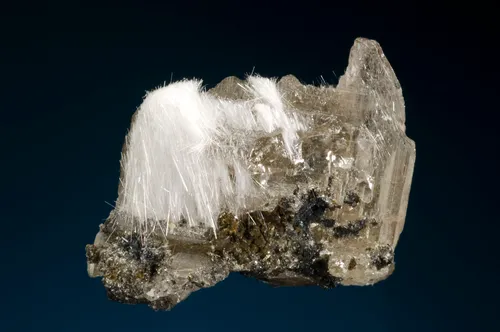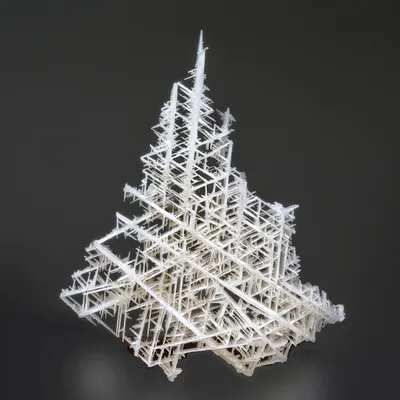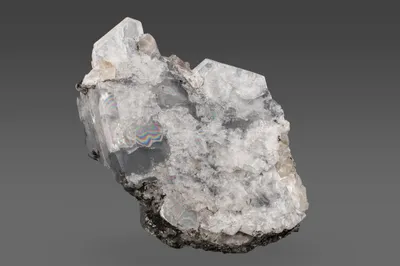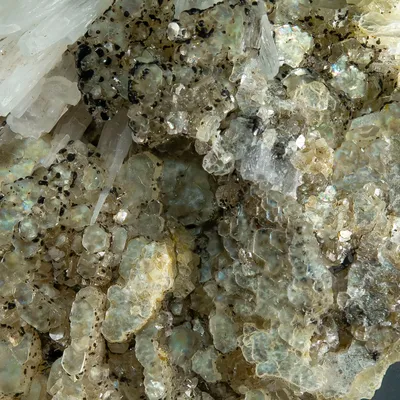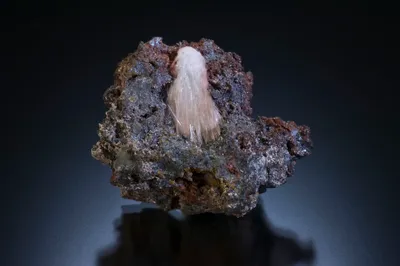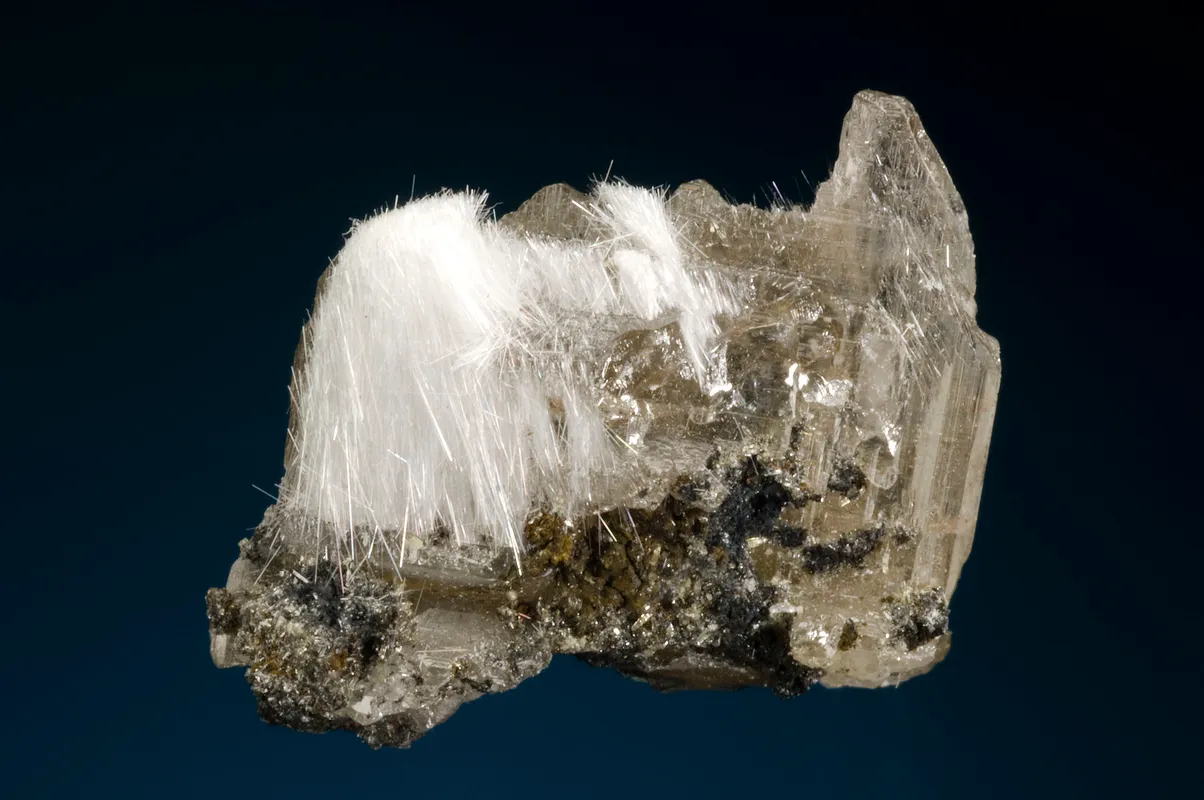
Image Credit: Jeff Scovil
Mineral Species
Fleischerite
Type Locality
Yes
Composition
Pb3Ge4+(SO4)2(OH)6·3H2O
Crystal System
Hexagonal
Status at Tsumeb
Confirmed (type locality)
Abundance
Very rare
Distribution
First and second oxidation zones
Paragenesis
Supergene
Entry Number
Species; TSNB131
Type Mineralogy
The original description of fleischerite (Frondel and Strunz 1960) was based on two separate specimens. One of these (presumably sourced by Strunz in Germany) is held by the Technical University in Berlin and is of unknown origin. The other (in the MGMH Collection at Harvard University) was originally from the collection of Wilhelm Klein, production manager at Tsumeb in the 1920s and 1930s. The latter specimen is believed to have incentivised Harvard’s purchase of the Klein Collection by Professor Clifford Frondel in 1953/54, who recognised that the fibrous white crystals were almost certainly of a mineral new to science (Carl Francis, pers. comm. to M. Southwood 2015). Fleischerite was the first naturally occurring sulphate of germanium. It is named for Michael Fleischer, who had worked on the geochemistry of germanium in the 1940s and 1950s but who is undoubtedly best known to the mineral community as the originator of Fleischer’s Glossary of Mineral Species. Fleischerite is an IMA-approved species, with special project status dated 1962 (http://cnmnc.units.it/; accessed January 2023). Type material for fleischerite is conserved at four institutions: Harvard University (specimen number MGMH 111461); Institut für Mineralogie und Kristallographie, Technische Universität, Berlin (specimen number 57/1405); the Ecole Nationale Supérieure des Mines, Musée de Minéralogie, Paris and the Smithsonian Institution in Washington D.C..
General Notes
According to Frondel and Strunz (1960) the type material was recovered from the first oxidation zone, between 6 and 8 levels. While the vintage of the Harvard (Klein Collection) specimen ties it unequivocally to the first oxidation zone, the evidence for "between 6 and 8 levels" is unclear and may be circumstantial on the basis, perhaps, of co-location with a major concentration of germanite ore (see Klein 1938; Southwood et al. 2018; Southwood 2022c).
Fleischerite occurs as very slender prismatic to fibrous crystals to 15 mm in length but usually much shorter. The crystals commonly form mats of subparallel individuals or, less commonly, rounded aggregates of radiating crystals. The colour is white to pale rose-pink or pale violet; individual crystals are transparent, while aggregates are translucent with a silky lustre. It can be confused with dundasite, with schaurteite (itself a germanium sulphate), and possibly with biehlite.
Fleischerite has been found in both the first and second oxidation zones and in at least four different parageneses:
- With cerussite, mimetite and tennantite – the Harvard co-type, first oxidation zone (Frondel and Strunz 1960).
- With plumbojarosite and mimetite, on dolomite – the Berlin co-type, first oxidation zone (Frondel and Strunz 1960).
- With alamosite, anglesite, hematite, kegelite, larsenite, leadhillite, melanotekite, mimetite, plumbojarosite, plumbotsumite, queitite. This is a second oxidation zone paragenesis recorded on 35 Level but possibly also occurring elsewhere (Medenbach and Schmetzer 1975; Keller and Bartelke 1982; Keller 1984).
- With other secondary germanium minerals, bartelkeite, söhngeite and a Ge-bearing plumbogummite from an unknown location in the mine (Southwood 2022c).
On 35 level fleischerite was found "growing through" crystals of anglesite and associated with melanotekite and kegelite (Keller and Bartelke 1982).
Associated Minerals
alamosite; anglesite; bartelkeite; cerussite; germanite; hematite; itoite (?); kegelite; köttigite; larsenite; leadhillite; melanotekite; mimetite; plumbogummite; plumbojarosite; plumbotsumite; queitite; söhngeite; tennantite-(Zn); thaumasite
Pseudomorphs
The following minerals are reported to form pseudomorphs after fleischerite: itoite (rare; Weber (1977); note that itoite (as a species) has doubtful (IMA) status, http://cnmnc.units.it/; accessed January 2023).
